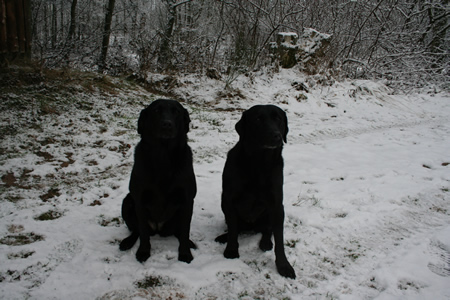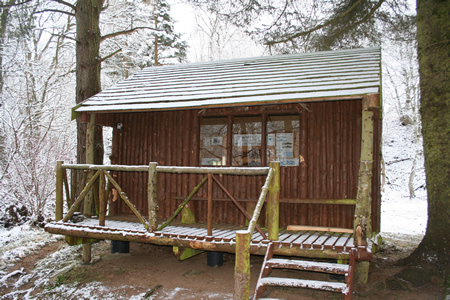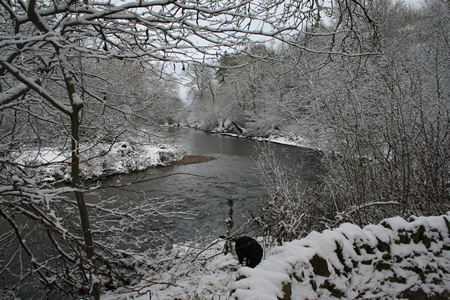Most readers of these blogs will know that I work for the Atlantic Salmon Trust, so I thought you might be interested to read our end of year message to supporters. While I couldn’t deny that there are some threats to the survival of wild salmon and sea trout, I hope you may feel encouraged by some shafts of light that are appearing after the success of the SALSEA project (research into the lives of salmon at sea). Atlantic Salmon Trust. This new knowledge should ultimately make us better managers of salmon fisheries than we are at present, but there’s a long way to go. For me it is a never ending source of fascination to be working on the big picture simultaneously with managing a small east coast river fishery.
ATLANTIC SALMON TRUST
End of year review 2012
People have asked me recently, “What do you think is the actual state of wild Atlantic salmon stocks?” While AST has no more information than ICES, NASCO, or anyone else involved in salmon and sea trout conservation, we do perhaps have an overview of what is happening now, what the trends are, and in some circumstances, what can be done to improve survival. AST’s new strategy, which came into being after our Ocean Silver conference last December, takes the whole life of the salmon – from the egg to the kelt – and breaks it down into what we are calling “the three Pillars”, the ocean zone, coastal waters and the freshwater environment.
AST’s new approach has compelled us to think strategically about threats to both salmon and sea trout throughout their life cycles, and to identify places or periods in their lives where there are opportunities for remedial action. The last year, in the wake of NASCO’s Salmon Summit and AST’s own Ocean Silver conference, has been spent putting together, piece by piece, the new strategy. By looking at the whole lives of the two species from the viewpoints of a) what the threats are and b) Assessing risks to survival each threat poses in the light of likely effectiveness of management interventions, we have a plan of work that will keep us busy for at least the next five years.
The key outcome here is to prioritise the work plan on the basis of where we can make the greatest contribution to conservation, and ultimately survival of both species.
The last year has therefore been a period of gestation, as everyone involved in the science and management of migratory salmonids has clarified their objectives, and none more so than AST. We recognise, among many other initiatives, the outstanding work being done with AST support by GWCT on, for example, parr survival to smolt at East Stoke on the River Frome, and S&TA’s and AST’s hugely important lobbying effort to persuade Government to take action to protect the unique environment of the Southern chalk rivers. Work being done throughout the UK by the Rivers Trust and the Rivers and Fisheries Trusts of Scotland to improve water quality, flows and access for migratory fish is absolutely essential if our rivers are to produce optimum numbers of smolts. The increasing influence of the national fishing lobby has engaged the wider angling community, and given anglers highly effective political lobbying instruments. However, most of this work concentrates on the freshwater environment, with some notable exceptions.
In coastal waters the old chestnuts of mixed stocks netting and the impacts on salmon and sea trout of salmon aquaculture, have come under increasing scrutiny, with perceptible movement in terms of new data, technologies and opportunities to influence real changes in both areas.
While we cannot yet claim any outcome that has led immediately to a greater abundance of wild salmon and sea trout returning to rivers, the fact that there is now some movement in these debates means that there is at least a modicum of hope that real results can be achieved. The decision by the Westminster Government to phase out the NE drift nets before 2022 is most encouraging. Moreover, there is now recognition by government that T&J nets in England are operating mixed stocks fisheries. In cases where these nets are shown to exploit stocks close to or below conservation levels, they will also be closed. These are big steps forward, and will certainly benefit Scottish rivers, as well as English ones.
Salmon farming in Scotland continues to expand, with large farms being planned off the west coast. This valuable industry, in terms of jobs and revenue, as well as its contribution to removing the pressure off killing wild salmon, deserves our support. Most conservation bodies recognise that industrial scale exploitation of the seas is unsustainable, and that aquaculture can reduce that exploitation.
The problem is that salmon farming as currently practised has been shown to damage the environment and wild life in both fresh and salt water.
For AST this issue is a major challenge because, while we recognise the achievements of the industry in terms of the economic and social boost is has provided to local communities along the west coast of Scotland, we know that it cannot continue as it is. The Trust’s recent efforts have focussed on alternative technologies where influents and effluents can be properly controlled, and a ‘biological firewall’ placed between farmed fish and the environment. The Trust is now looking carefully at closed containment (CC) technologies. After three visits to Canada and USA to look at the prototype CC industry there, AST has supported its development in the UK. The new re-circulating freshwater systems have been shown to work in terms of the technology, controlled grow-out and product quality, but have not yet persuaded the investment community to take the plunge. With interest being shown in China, Romania, as well as in countries experiencing the adverse effects of open cage systems, we are confident that commercial initiatives are not far off.
The next three years will see AST moving forward, guided by its Three Pillars strategy.
Under Pillar 1 – the ocean – we will identify as precisely as possible the salmon’s ocean migration routes, work with governments to include salmon in their ongoing pelagic monitoring, negotiate safe passage for salmon along their migration corridors. We will also be building an extensive database of the genetic ‘signature’ of historic salmon samples taken from the Greenland and Faroes commercial fisheries and relate those to regions and increasingly to rivers of origin in the UK. For example, knowledge of where salmon from rivers with fragile populations feed will enable us to negotiate with the Greenland Government reductions in fishing intensity in those specific areas. This approach should also enable prediction models to be developed for advising managers of future migrations in terms of both quality and abundance.
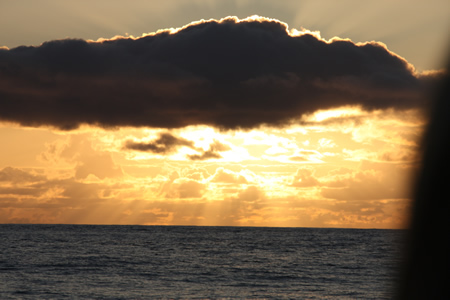
Pillar 1. This is the mid Atlantic Ocean, across which our salmon migrate to reach the Greenland feeding grounds. AST aims to negotiate safe corridors for smolt migrations to prevent them ending their lives as by-catch in commercial trawler nets.
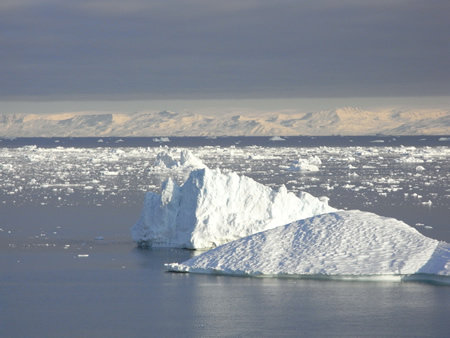
Pillar 1. Where the South Esk’s spring salmon feed. This is the west coast of Greenland in the summer of 2011.
Under Pillar 2 – coastal waters – we will identify all existing and potential threats to the safe passage of outgoing migrations of smolts and inward migrations of returning adults. We will then quantify these threats in a risk analysis and prioritise them in terms of our ability to take remedial actions. Inevitably most of the threats where we can take effective action are manmade. We will therefore work closely with our partner organisations and with governments to reduce threats, such as those posed by renewable energy generation and transmission, coastal pollution, impacts of climate change (eg invasive species) salmon farming and mixed stocks exploitation of salmon and sea trout, to an absolute minimum. We will also maintain a close watch on damage to stocks from predation, especially in estuaries.
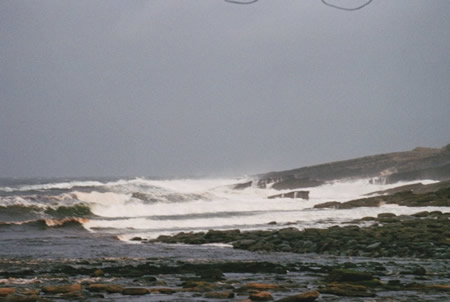
PILLAR 2 - coastal waters -Rough seas in the Pentland Firth
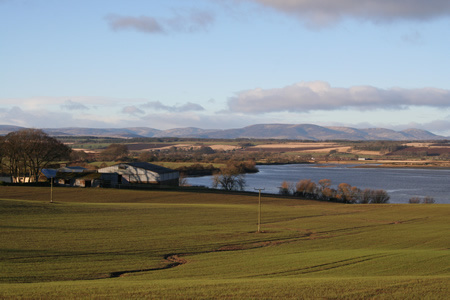
Pillar 2. This is Montrose Basin, the tidal lagoon that forms a unique feature of the South Esk estuary. Superb habitat for water fowl, especially geese, waders and birds of prey, it is also important coastal habitat for wild salmonids. There is considerable concern about a current planning application to install two-way tidal turbines on each side of the new bridge in Montrose, where the South Esk enters the open sea.
Under Pillar 3 – the freshwater environment – we recognise that the catchment-based monitoring, measuring and maintenance work done by fisheries trusts is the key to natural smolt production. However there is also a vital role for AST in raising awareness of issues such as flows, the role of small streams, the efficacy of stocking, the welfare of sea trout populations and stock assessment. The Trust’s overview of the whole lives of salmon and sea trout means we are better placed than ever to support our partners in their work, to initiate new research and communicate results to fisheries managers on the riverbank.
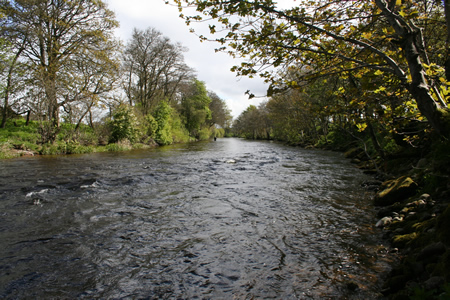
Pillar 3. Tyndals Pool on Finavon Castle Water at a good spring height
AST finds itself increasingly working across national borders, sometimes taking a lead role in bringing together new data under the Three Pillars approach. Our conservation effort focuses on influencing, promoting and enabling relevant research and communicating results to fisheries organisations, trusts and the public.
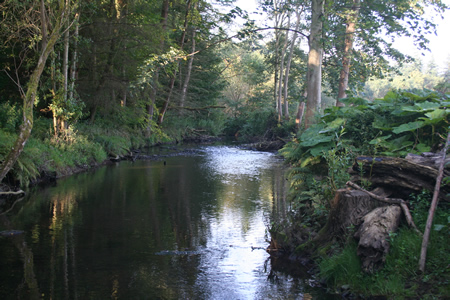
AST is the only conservation charity devoted solely to promoting the wellbeing of wild salmon and sea trout across their full range of habitats at sea and in fresh water. We do not have a subscribing membership, but we do have a growing constituency of AST Friends who regularly give money to the Trust. Because we are a very small organisation (2.5 staff), and are supported by a team of some of the most eminent scientists in the field, we are able to exert our independent leadership separate from any vested interest. While we work in harmony with others in the sector, it is our freedom to develop thought-leadership that gives AST its ability to work with partners throughout the North Atlantic region, especially in the UK and Ireland. Please visit our website and become an AST Friend if you like what you read.
At the end of the day the only success measure will be a recorded improvement in numbers of wild salmon and sea trout returning to our rivers.
WWW.atlanticsalmontrust.org
TA
3 Jan 2013

